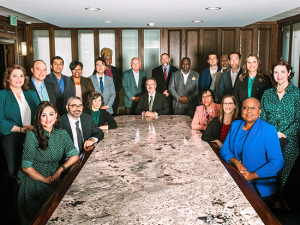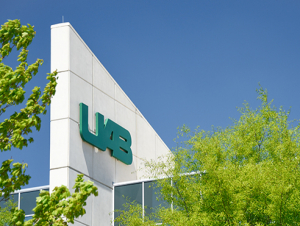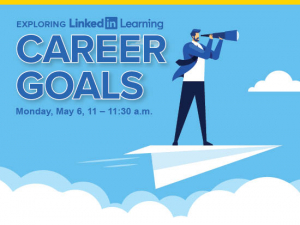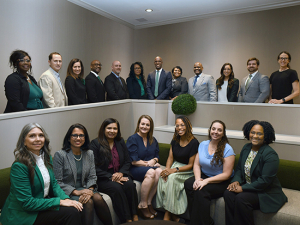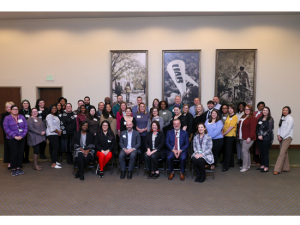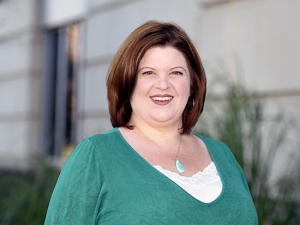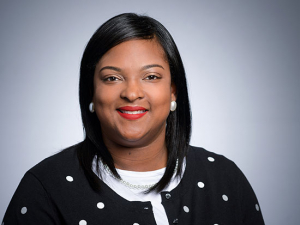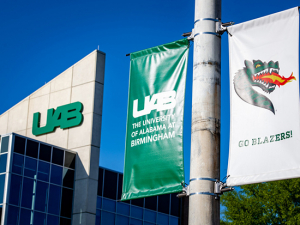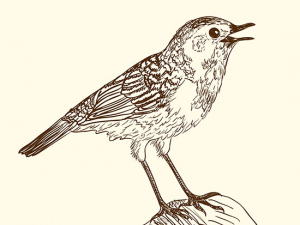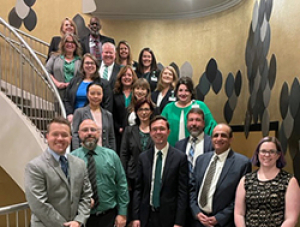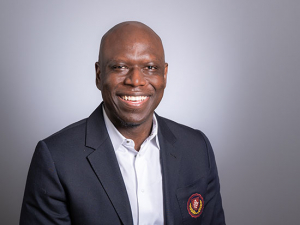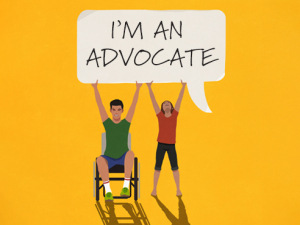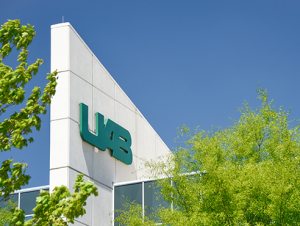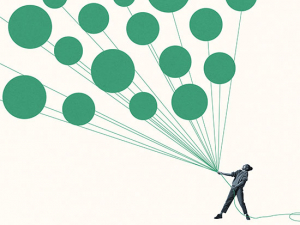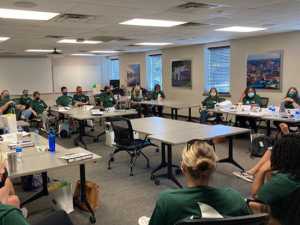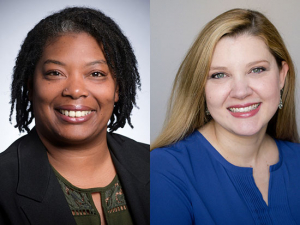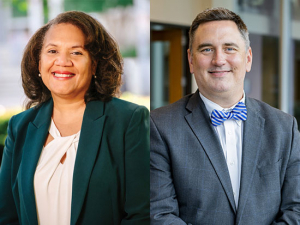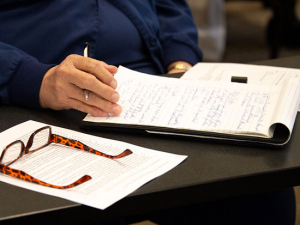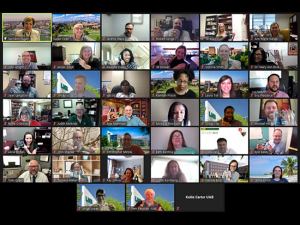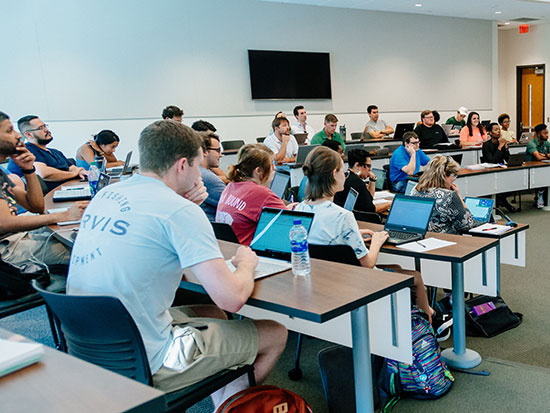 How do you become a better teacher? The first six graduates of the Center for Teaching and Learning's platinum certificate program share key takeaways.Call them the Platinum Six.
How do you become a better teacher? The first six graduates of the Center for Teaching and Learning's platinum certificate program share key takeaways.Call them the Platinum Six.
The first recipients of the Center for Teaching and Learning’s new platinum certificate have worked hard to add new educational superpowers to their CVs. Platinum builds on the Level I gold certificate program. After earning enough points to reach the gold level, faculty must attend additional workshops to reach the platinum level. They also must observe a colleague, be observed themselves and complete a capstone project related to a personal teaching interest.
“While research has shown that participating in CTL workshops has a positive impact on teaching effectiveness, the platinum certificate takes teaching development to a very personal level,” said CTL Director Scott Phillips, Ph.D. “Faculty pursuing this certificate work closely with the CTL on an individualized plan for improvement. And when teachers watch recordings of their own teaching and observe one another in the classroom, there are tremendous opportunities for growth.”
The rigor of the program is important to its success, Phillips said. “Because I have worked with and observed each of these teachers in the classroom and watched their growth and development, I can point to each of them and say to others, ‘This is an excellent teacher. Observe their teaching and talk to their students and you will learn what it means to be effective in the classroom.’”
Excellence is an end unto itself, of course — and one of UAB’s Shared Values. In face of their hectic schedules, however, what would drive faculty to invest the effort to reach the pinnacle? The six platinum recipients answered that question and shared the lessons that made the most impact on their own teaching practices, in conversation with the UAB Reporter.
And if their enthusiasm inspires you, the next cohort of faculty for the platinum certificate will begin this fall, Phillips said. To learn more, email uabctl@uab.edu.
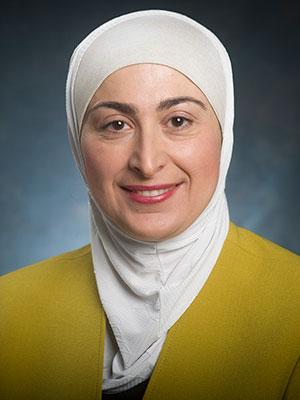 Nour Kattih
Nour Kattih
Why? To find a better way
Nour Kattih, Ph.D., instructor, School of Public Health: “One of the things I didn’t like when I was a student myself was the boring lectures. I didn’t want to be a boring teacher, so I started attending the CTL to learn modern teaching methods.”
Heather Patterson, Ph.D., instructional laboratory coordinator, Department of Biology: “We know from the literature that there are better methods than just standing in front of the class and writing on the chalkboard, but you can’t always get the essence or the how-to of these methods from reading a paper. The CTL not only allows you to hear practical information on relevant teaching topics, but you also get to interact with other educators and hear their tidbits on what works for them. And with the platinum level you get to delve deeper and really work on putting what you have heard and learned into practice — to really work on those skills and making them relevant to your class, to you and your students.
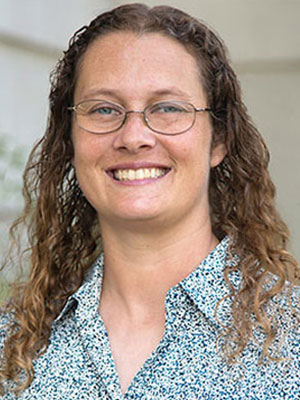 Heather Patterson“I have found the newer series Global Awareness useful, because this is an area that I don’t have a lot of personal experience with. I want to be able to reach and help all of my students equally. Also, the personal perspectives brought by the other faculty attending that series are useful in gaining insight into different backgrounds and learning ways. The bottom line is the more you can make the course engaging and relevant, the more likely you are to help students learn.
Heather Patterson“I have found the newer series Global Awareness useful, because this is an area that I don’t have a lot of personal experience with. I want to be able to reach and help all of my students equally. Also, the personal perspectives brought by the other faculty attending that series are useful in gaining insight into different backgrounds and learning ways. The bottom line is the more you can make the course engaging and relevant, the more likely you are to help students learn.
“I’m also a life-long learner. I have taken most of the workshops that the CTL has offered — some of them more than once, because you get something different out of them every time. I also want to do the best at what I’m supposed to be doing, in this case teaching, so I am going to gather all the information that I can, which means doing everything the CTL has to offer. I guess I can compare it to when I was a child and would check out the whole shelf of books in the library on a topic. I wanted to learn all that I could, and I am still doing that now.”
Jessica Denton, assistant professor, School of Health Professions: “I’m a very practical person. I like to see someone using a tool and then to get a chance to practice it myself in a workshop. Brian Moon did a class on gamification, and I implemented that in a course of mine and the students responded really well.
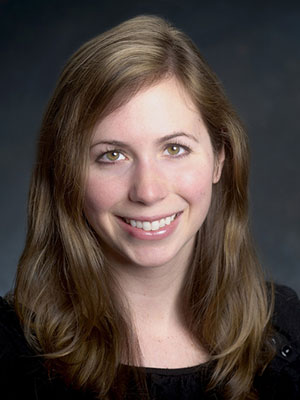 Jessica Denton"He talked about Poll Everywhere [an interactive audience participation tool] and Kahoot [learning game/quiz software] and showed us how to make our own Jeopardy game. I made a Jeopardy game for my second-year students [in the Master’s in Genetic Counseling program] to review the many genetic syndromes they learned in the first year when they first got back to class in the fall. It’s a way to have fun and be a little competitive, but it’s not a quiz.”
Jessica Denton"He talked about Poll Everywhere [an interactive audience participation tool] and Kahoot [learning game/quiz software] and showed us how to make our own Jeopardy game. I made a Jeopardy game for my second-year students [in the Master’s in Genetic Counseling program] to review the many genetic syndromes they learned in the first year when they first got back to class in the fall. It’s a way to have fun and be a little competitive, but it’s not a quiz.”
Peter Jones, Ph.D., assistant professor in the Department of Political Science and Public Administration: “I was constantly spending time prepping my graduate courses and that wasn’t leaving me with the time I wanted to do research. I went to the CTL to learn to be more efficient and effective. They gave me some great tips and taught me to be better in the classroom as well.
“One of the best things about the CTL is you get to talk shop about teaching. Scott [Phillips] and I were talking about grading, and he recommended a book on a new approach called specifications grading. Instead of points, you grade students’ work based on whether it’s complete or incomplete. Their final grade is based on the number of assignments they complete, versus how many points they accumulate. It’s supposed to be more transparent and fairer, and learning outcomes are better. And it really saves time grading.
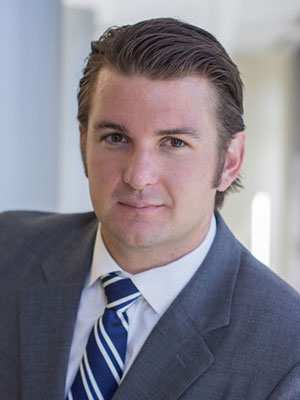 Peter Jones"At the time, only one other faculty member [at UAB] had tried it. My capstone project was to evaluate if it did save me time and if the students liked it. The students loved it — our MPA students especially — because they felt they had a lot more autonomy. I’m writing a journal article on it now.
Peter Jones"At the time, only one other faculty member [at UAB] had tried it. My capstone project was to evaluate if it did save me time and if the students liked it. The students loved it — our MPA students especially — because they felt they had a lot more autonomy. I’m writing a journal article on it now.
“That said, specifications grading can be a bit controversial. In some way, you are saying to get a B you have to do less work than someone who earns an A, versus doing the same amount of work but with lower quality. During my capstone presentation we had a really good discussion on this. At one point I stopped presenting, and it became this philosophical pedagogical debate on why we grade and how we grade and should you expect students to master everything. It was really cool.”
Why? Because there’s a lot I didn’t learn in my professional training
Neena Xavier, M.D., assistant professor, School of Health Professions: “I’m an M.D. by training and had spent time in private practice before joining UAB [where she teaches in the Physician Assistant Studies program].
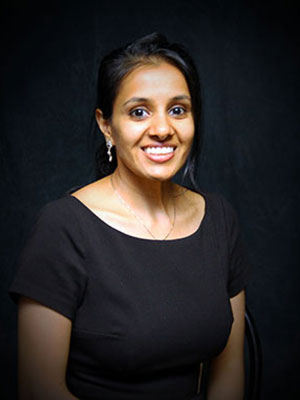 Neena Xavier"Even though there’s definitely an educational component to medicine, being a doctor is not the same as being a professor. You need to know about syllabus writing and how to create exam questions that measure what you think they’re measuring, for example, and that’s not what they cover in medical school. The CTL is how I was told I could develop as a faculty member.”
Neena Xavier"Even though there’s definitely an educational component to medicine, being a doctor is not the same as being a professor. You need to know about syllabus writing and how to create exam questions that measure what you think they’re measuring, for example, and that’s not what they cover in medical school. The CTL is how I was told I could develop as a faculty member.”
Andrew Pucker, O.D., assistant professor in the Department of Optometry and Vision Science: “After arriving at UAB, I knew that I would be eventually teaching a course. Since I got limited formal pedagogical training during my graduate training, I decided to broaden my skills by attending lectures at the CTL. After completing my Level I (gold) teaching certificate, I felt like I learned several valuable skills related to such topics as course room-management, test-writing and interactive teaching, which inspired me to continue my training at the CTL.”
Heather Patterson: “Very few programs actually teach doctoral students the best practices in teaching. As a side note, though, UAB does — the Graduate School has the CIRTL [Center for Integration of Research, Teaching and Learning] program.
“I found the eLearning series important. If you aren’t taught to teach in general, you definitely aren’t taught to teach online. Feedback is important in all cases of teaching but even more so in the online environment. You have to make sure you work to help keep the students engaged.”
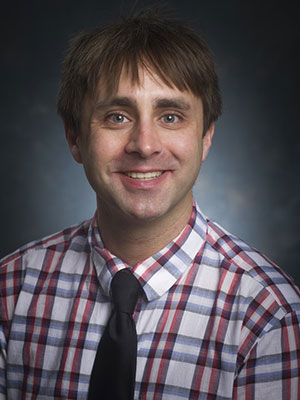 Andrew PuckerJessica Denton: “I always tell people I never wanted to be a teacher. My mom taught fifth and sixth grade for over 30 years and my brother is a history teacher, but I never wanted to be one. After I got my master’s in genetic counseling here at UAB and then worked for a couple of years, though, I felt something was pulling me back. I wanted to be involved with the program, advising and helping students through their graduate projects. And when I started teaching in the classroom, it felt like something I’m meant to be doing after all. The CTL really helped me gain confidence. As someone who doesn’t have a background in education, it helps you get over that impostor syndrome.”
Andrew PuckerJessica Denton: “I always tell people I never wanted to be a teacher. My mom taught fifth and sixth grade for over 30 years and my brother is a history teacher, but I never wanted to be one. After I got my master’s in genetic counseling here at UAB and then worked for a couple of years, though, I felt something was pulling me back. I wanted to be involved with the program, advising and helping students through their graduate projects. And when I started teaching in the classroom, it felt like something I’m meant to be doing after all. The CTL really helped me gain confidence. As someone who doesn’t have a background in education, it helps you get over that impostor syndrome.”
You can learn a great deal by watching others
Jessica Denton: “Observing gets you more outside your box of how you do things. I observed Lynn Holt, who is another genetic counselor in our department, teaching her undergraduate class. It was very eye-opening as a teacher of grad students, where classes have five to 10 students, to observe her 50-person undergraduate class. That gave me a whole new perspective.”
Being observed is uncomfortable, but so valuable
Neena Xavier: “We shy away from giving and receiving feedback. But you don’t benefit from just reinforcing what you’re good at. [For the platinum certificate’s observation requirement] I picked the two classes that I was most uncomfortable with. Dr. Phillips came and observed me and gave really good feedback that I’m implementing in those classes this year. You can pay good money for a consultant to come in who is willing to give you feedback; I cannot stress the value of that.”
Andrew Pucker: “When Scott Phillips came to observe me teaching, he videotaped my lecture and made me watch it. It was kind of horrible experience at the time. But I’m a better teacher because of it.”
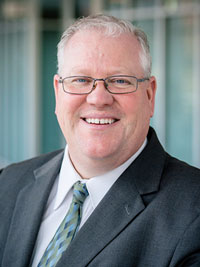 |
| “I can point to each of them and say to others, ‘This is an excellent teacher. Observe their teaching and talk to their students, and you will learn what it means to be effective in the classroom.’” — Scott Phillips, CTL director |
Experience matters
Neena Xavier: “The CTL certificates align with our P&T [promotion and tenure] packet. It’s something I can take to my chair to say, ‘I have done this training, and I am implementing these lessons in my classes.’”
Peter Jones: “Like many faculty, my goal is to get tenure. Both the gold and the platinum CTL certificates are a very tangible thing that I can include in my tenure file. The main teaching evaluation is with our course evaluations, and those can be biased by age, gender, type of class and more, even whether it’s a new class versus one that you’ve taught before. I didn’t want the evaluation of my teaching to hang just on that.”
Your students will benefit
Andrew Pucker: “CTL courses will benefit your didactic teaching by helping you make your course expectation clearer, your course more interactive and exciting, your exam questions clearer and written at your desired testing level and you more understanding of your student’s needs.
“The CTL also has a clinical teaching series, which may allow you to help your students get more out of their clinical rotations. For instance, I learned to improve the feedback I was giving. When you notice a student doing something wrong when they’re with a patient, it helps you nicely correct them in the moment and then, when the patient leaves, you give them instruction in a constructive and kind way.”
Nour Kattih: “It was nice looking outside of my classroom and experiencing what my students experience. It made me realize that students have to learn how to deal with the different teaching methods that instructors use. It also taught me how things can be done differently in the classroom to help students understand the material.”
Capping it off
Heather Patterson: "For my capstone I spoke about how the non-majors Biology laboratory (BY 102) was turned into a CURE (course-based undergraduate research experience). A CURE is designed to give students real, meaningful, hands-on experience to discover things that even the professor might not know. It’s different than the 'cookbook' labs where there is an expected outcome (and sometimes you don’t even get that outcome). These have traditionally been used in courses for majors, but we wondered, would students who aren’t necessarily planning to be scientists, understand and get more out of course if they were actually doing real science, collecting real data? The course is a Tick Explorations lab, the whole semester is spent researching ticks and tick pathogens from samples collected in the local Birmingham area.” [Learn more about Patterson’s Tick Explorations course in this related article.]
Andrew Pucker: “I was particularly focused on making my classroom more interactive with gamification. Before each class I create a game on Kahoot, a phone app that students all can use. It pops up on the classroom screen and their phones and is like Buffalo Wild Wings trivia. There typically are three or four questions — some review questions from the previous week and some forecasting topics I’m going to cover in that class. They have 20 seconds to ring in and the faster you ring in the more points you get. Asking these questions allows you to do some reteaching if necessary and to gauge the student’s experience level.”
Six important reads on teachingRecommendations from CTL director Scott Phillips: Teaching International Students: Improving Learning for All, edited by Jude Carroll and Janette Ryan (Routledge, 2005) Fostering International Student Success in Higher Education, by Shawna Shapiro, Raichle Farrelly and Zuzana Tomas (TESOL Press, 2014) Teaching Naked: How Moving Technology Out of Your College Classroom Will Improve Student Learning, by José Antonio Bowen (Wiley and Sons, 2012) What the Best College Teachers Do, by Ken Bain (Harvard Press, 2004) Generation iY: Secrets to Connecting With Today’s Teens and Young Adults in the Digital Age, by Tim Elmore (Poet Gardener, 2015) Specifications Grading: Restoring Rigor, Motivating Students, and Saving Faculty Time, by Linda Nilson (Stylus, 2015) |

